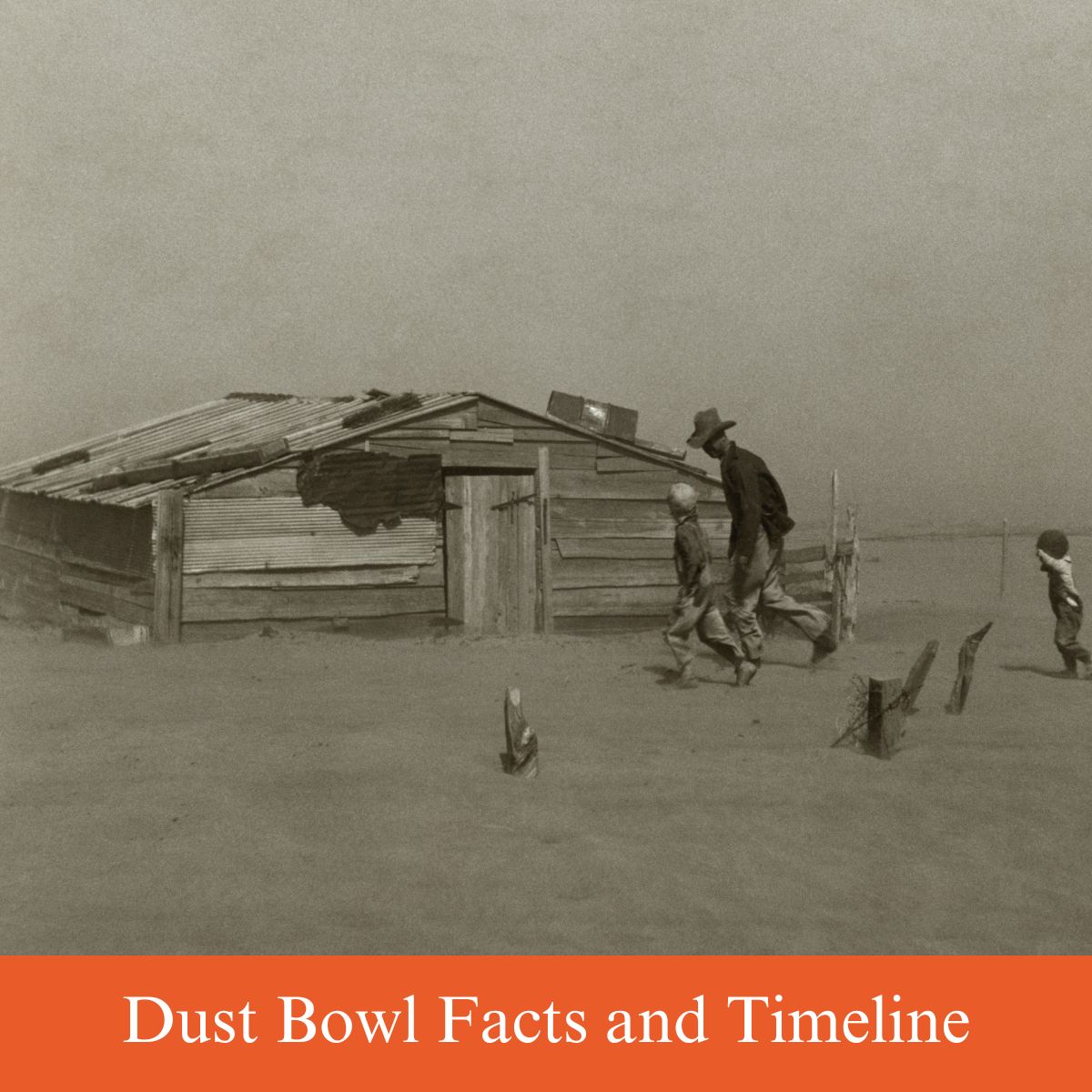Compounding the economic crisis and resulting unemployment, a drought overtook much of the American Midwest, which sent many farmers into ruin and in search of new endeavors outside the barren landscape.

American farmers had been overplanting and poorly managing their land for years. So when drought conditions occurred between 1930 and 1936 in Texas, Oklahoma, Kansas, Nebraska, Colorado, and New Mexico, the soil simply dried up and blew away.
Poor farming practices included not only overplanting of crops but overgrazing livestock. Additionally, farmers routinely plowed under natural grasses and replaced them with crops that were not drought-resistant, thereby providing nothing to hold the topsoil in place.
Because the crops died due to a lack of rain and bad farming practices, millions of acres of topsoil were blown away during dust storms. Large dark clouds of dirt were visible across the Great Plains during the timeline of the Dust Bowl. In 1932, 14 dust storms were recorded on the Great Plains. There were 38 storms in 1933.
More than one million acres of land were affected during the Dust Bowl of the 1930s. Thousands of farmers lost their property as well as their livelihoods. Many of the down-on-their-luck farmers migrated to the country's urban centers looking for work and a fresh start. In some cases, three and four generations of family members moved across the country together, looking for food, shelter, and work. But with 25 percent unemployment at some points during the Great Depression, the chances of finding work were slim.
During the Dust Bowl, some 200,000 migrants moved to California, most destitute and jobless. The former farmers and their families' presence simply added to cities' unemployment problems. Because the influx of farmers stressed relief programs, strife was created in many areas where migrants had set up shantytowns called "Hoovervilles."
Hobos During the Dust Bowl
One of the more interesting aspects of the history of the Dust Bowl was the emergence of "hobos." Farmers who left the Dust Bowl states had no money to buy bus or train tickets, and few had vehicles that could make the trip. Therefore, many men took to illegally hopping on trains to travel to cities hundreds or thousands of miles away where they hoped to find jobs.
An estimated 2 million people became hobos during the Dust Bowl. The life of a hobo was not an easy one, though. In one year during the Great Depression, it's estimated that 6,500 people were killed trying to hop on moving freight trains. Many died as a result of accidents, though some were killed by guards hired by railways to keep hobos off the trains.
Dust Bowl Interesting Fanbase:
- On Sunday, April 14, 1935, winds reached 60 miles an hour during a dust storm on the Great Plains. An Associated Press reporter dubbed the area the Dust Bowl for the first time after witnessing the storm.
- Located in the heart of the Dust Bowl, the state of Nebraska only received 14.5 inches of rainfall in 1934. The area typically received 20 inches of rain annually. The decreased precipitation caused corn yields to drop by 75 percent.
- New Deal programs included five major farm laws designed to get farmers back on their feet. Many of these programs are still in existence today. The laws included the Agricultural Adjustment Act, Civilian Conservation Corps, Farm Security Administration, Soil Conservation Services, and Rural Electrification Act.
- During the Dust Bowl, students were sent home from school to prevent "dust pneumonia." Sometimes, they were kept at school overnight when it became too dangerous to walk home through the dust storms and decreased visibility.
